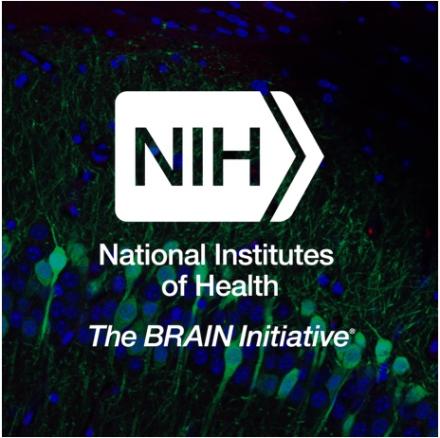News

BRAIN News Spotlight
Researchers Fully Map Neural Connections of the Fruit Fly Brain
NIH-supported milestone will advance understanding of brain processes in larger animals.
View Spotlight ArticleThe NIH-led Brain Research through Advancing Innovative Neurotechnologies® (BRAIN) Initiative continues to teach us about the world’s most sophisticated computer: the human brain. This striking image offers a spectacular case in point, thanks to a new tool called Visual Neuronal Dynamics (VND).
The Brain Research through Advancing Innovative Neurotechnologies® (BRAIN) Initiative, which is an NIH-led project aimed at revolutionizing our understanding of the human brain, happens to have generated some of the coolest—and most informative—imagery now available in neuroscience. So, throughout the month of August, I’ll share some of the entries from the initiative’s latest Show Us Your BRAINs! Photo and Video Contest.
NIH BRAIN Initiative-funded study opens the door to correlating deep brain activity and behavior
Success in flies and worms has inspired several efforts to reconstruct more complex mammalian brain circuits. Reconstructing a whole mouse brain using electron microscopy is the next logical step, but scaling from a fly to a mouse brain presents serious challenges.
The most comprehensive wiring map to date of the fruit fly brain has transformed the field of neuroscience, identifying new cell types and reconfiguring circuit models. Are neuroscientists now ready to tackle the mouse brain?
For the first time, scientists have recorded how our brains navigate physical space and keep track of others’ location.
NIH BRAIN Initiative-funded scientists used artificial intelligence to help redesign a nutrient grabbing, Venus flytrap-shaped bacterial protein into a highly sensitive serotonin sensor.
The National Institutes of Health will fund more than 175 grants, totaling nearly $500 million, through the NIH’s Brain Research Through Advancing Innovative Neurotechnologies® (BRAIN) Initiative, part of a large effort among federal and non-federal partners to use knowledge about how the brain works to develop more effective therapies for neurological disorders.
In the News
The BRAIN Initiative Alliance (BIA) aims to spread the word about BRAIN-funded scientific advancements. Visit the BIA website for up-to-date news coverage about the impact of BRAIN Initiative research.
The BRAIN Blog
The BRAIN Blog covers updates and announcements on BRAIN Initiative research, events, and news. Hear from BRAIN Initiative trainees, learn about new scientific advancements, find out about recent funding opportunities, and more.
Last reviewed on July 02, 2025
